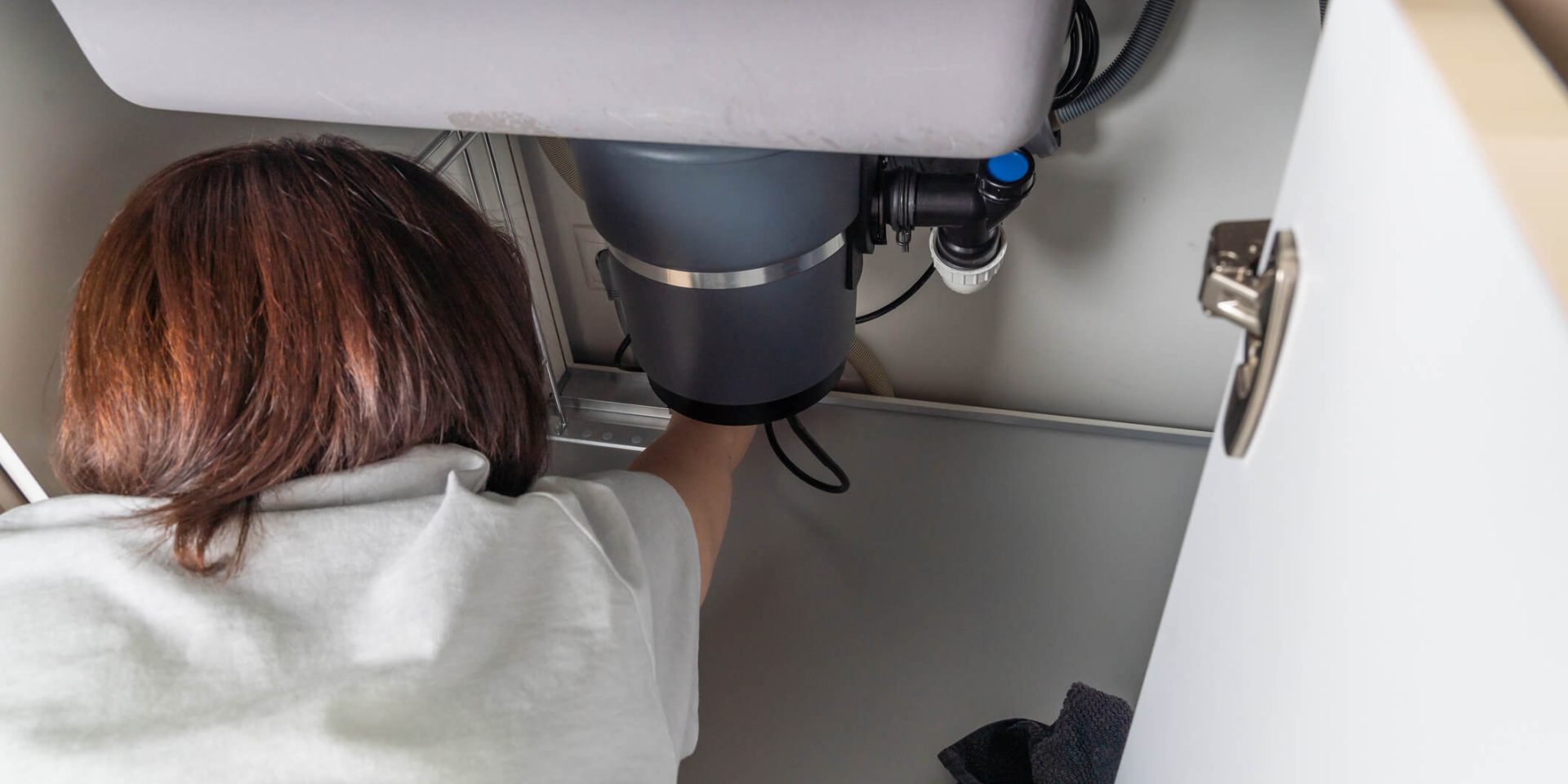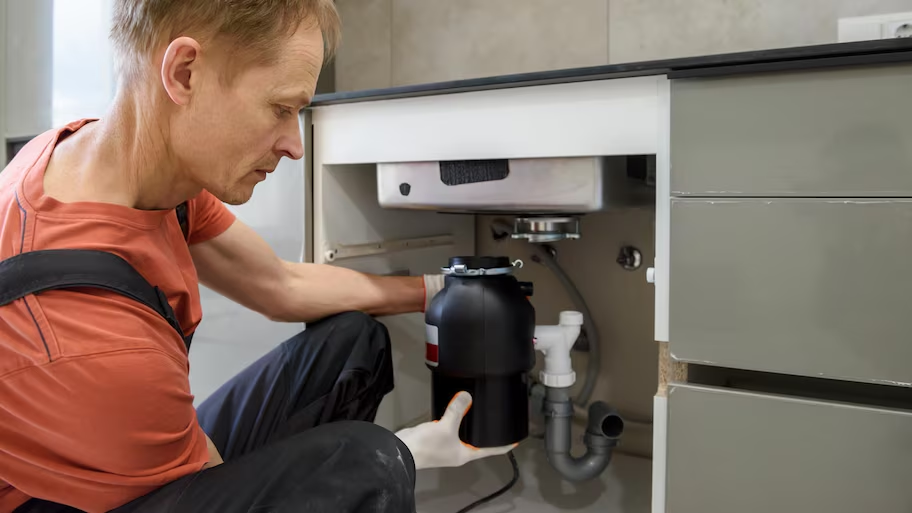Have you been trying to find content Garbage Disposal Leaking From Bottom?

Waste disposal unit are vital kitchen devices that assist in dealing with food waste successfully. However, a dripping garbage disposal can be a discouraging and messy issue to deal with. Thankfully, numerous leaks can be repaired conveniently with a couple of straightforward actions. In this post, we will review how to take care of a dripping garbage disposal effectively.
Introduction
Garbage disposals are installed under cooking area sinks and are made to shred food waste right into smaller pieces, permitting it to travel through the plumbing system easily. While these tools are usually reliable, leaks can take place with time as a result of deterioration, loose connections, or damages to the device.
Typical Reasons For Leakages in Waste Disposals
Worn Seals and Gaskets
Seals and gaskets play a critical function in avoiding water from dripping out of the waste disposal unit. In time, these parts can degrade, leading to leaks around the disposal device.
Loose Links
The connections between the waste disposal unit and the plumbing system can end up being loosened in time, creating water to leak out throughout procedure.
Cracks or Holes in the Disposal Device
Physical damage to the garbage disposal, such as fractures or openings in the housing, can likewise result in leaks.
Identifying the Source of the Leakage
Before attempting to deal with a dripping garbage disposal, it is important to recognize the resource of the leakage. This can generally be done through visual evaluation or by carrying out easy tests.
Visual Evaluation
Examine the garbage disposal unit carefully for any indicators of water leak. Pay very close attention to areas around seals, gaskets, and link factors.
Evaluating for Leaks
One means to evaluate for leaks is by running water via the disposal device and looking for any type of visible signs of leak.
Tools and Materials Needed for Taking Care Of a Leaking Waste Disposal Unit
Prior to starting the fixing procedure, collect the needed devices and products, including a screwdriver, adjustable wrench, plumbing technician's putty, substitute seals or gaskets, and epoxy or patching product for fixing fractures or holes.
Step-by-Step Guide to Repairing a Leaking Garbage Disposal
Turn Off the Power
Before trying any type of repair services, guarantee that the power to the garbage disposal unit is switched off to stop the risk of electrical shock.
Situate the Leak
Identify the precise place of the leak and identify the reason.
Tighten up Links
Make use of a wrench to tighten up any type of loose connections between the disposal unit and the pipes system.
Change Seals or Gaskets
If the leakage is because of worn seals or gaskets, remove the old components and replace them with brand-new ones.
Patching Splits or Openings
For fractures or holes in the disposal unit, usage epoxy or a suitable patching material to secure the broken area.
Examining the Garbage Disposal After Repair Service
Once the repair service is full, examine the garbage disposal by running water through it to guarantee that the leak has been fixed.
Preventive Maintenance Tips to Prevent Future Leaks
To prevent future leaks, it is essential to do normal maintenance on your waste disposal unit. This includes maintaining it clean, staying clear of putting non-food things or hard things down the disposal, and regularly checking for leakages or other concerns.
Conclusion
To conclude, repairing a dripping waste disposal unit is a relatively simple procedure that can be completed with basic tools and products. By complying with the steps laid out in this post and exercising preventative upkeep, you can keep your garbage disposal in good working condition and avoid costly fixings in the future.
What to Do About a Leaking Garbage Disposal
A leaking garbage disposal often goes unnoticed until you confront a sopping cabinet, a foul-smelling puddle, or an audible drip-drip-drip from the unit. The fix can be frustrating, too, because the leak can stem from a number of components in the system. Fortunately, with a little sleuthing, you can zero in on the leak and—depending on the exact location—stop the icky oozing and repair the component that caused it. Worst case scenario, if it turns out that the garbage disposal must be replaced, installing a new one is a reasonable do-it-yourself task for those with basic plumbing skills. Read on to keep the cash you’d otherwise hand over to a pro.
Prepare to find the leak
Prior to testing the garbage disposal for leaks, unplug it at the wall outlet and turn off the power from the breaker box to prevent electrical shock. Then insert a watertight sink stopper into your sink drain and wipe the unit dry with a clean cloth. In any handy container, mix a few drops of food coloring into a few cups of water, and pour the dyed water onto the sink stopper to help you locate the leak.
Investigate the source
the top, where the disposal meets the sink drain the side, where the dishwasher hose or main drain pipe connects to the disposal or the bottom of the unit Inspect each of these locations while gliding a light-colored rag over the unit; the dyed water will readily show on the rag and reveal the location of the leak. If a leak isn’t immediately apparent, remove the sink stopper and pour a few more cups of dyed water down the sink drain, then check for leaks again. Leaks near the top of the unit are more likely to show themselves while the sink is plugged, while side and bottom leaks are more noticeable while the sink is unplugged.
The metal sink flange that sits directly inside the sink drain is typically sealed around the top with plumber’s putty (a clay-like sealant) and then secured from under the sink with bolts. If the plumber’s putty deteriorates, or the bolts loosen, the flange can no longer form a watertight seal between the sink drain and the disposal—which could cause a leak at the top of the unit.
To reseal the leaky flange, you must first detach the garbage disposal. Start by loosening the screws securing the main drain pipe to the disposal, then loosen the screws in the metal clamp securing the dishwasher hose to the disposal and detach the drain pipe and dishwasher hose from the disposal. Loosen the screws in the mounting ring that connects the disposal to the metal mounting assembly beneath the sink, then pull down the disposal and carefully set it on a clean, dry surface. Loosen the bolts in the mounting assembly with a wrench, then pull down the mounting assembly and set it near the disposal.

Hopefully you enjoyed our part on The Handy Guide To Fixing Your Garbage Disposal Leaking. Thanks so much for taking time to read our article. Are you aware of somebody who is inquisitive about the niche? Feel free to share it. We truly appreciate reading our article about Why Is My Garbage Disposal Leaking From the Bottom?.
Learn More